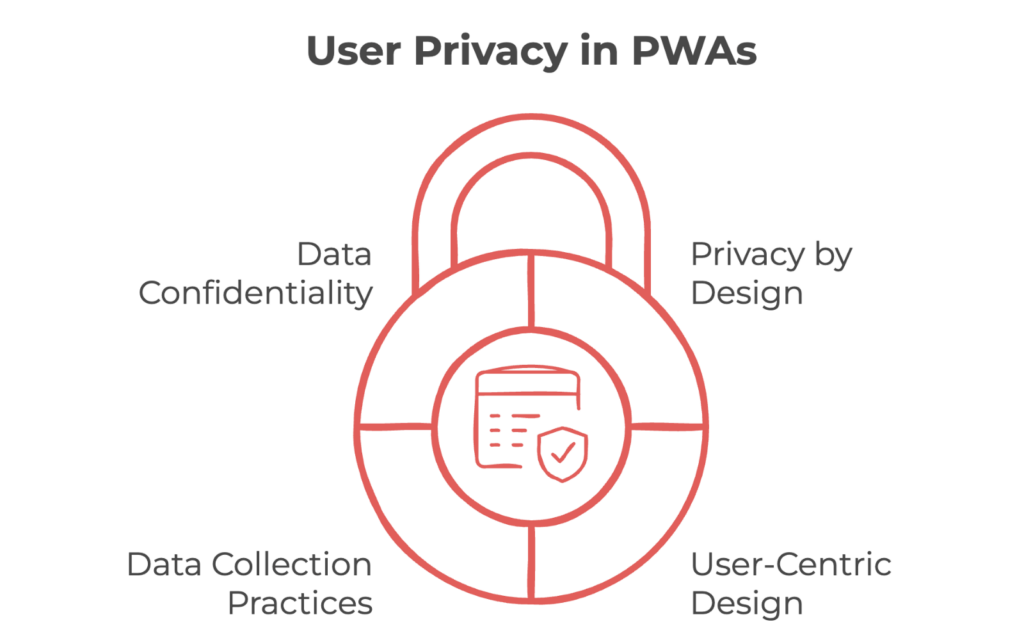Web Technology
Securing Progressive Web Apps (PWAs): Best Practices
Progressive Web Applications, or PWAs, are a web-based alternative to native apps. They offer similar functionality but take up less storage. As more companies create their own PWAs, user privacy on these platforms is questioned. While there are potential risks – following the best practices in the Progressive Web App development process will bolster extra layers of security and increase user confidence.
Do you remember the old philosophical question, “If a tree falls in the forest and nobody hears it, does it make a sound?” The 21st-century update to that saying can be, “If a business opens for customers but doesn’t launch an app, does it actually exist?”
Whether working in a giant multinational corporation or simply trying to get your small business off the ground, an app is an essential link to your customers. Companies without apps sacrifice the opportunity to grab a slice of the growing eCommerce pie.
An app for business can be one of two types: A native application, downloaded through a third-party app store, or a progressive web app (PWA), which makes a website function like an app through a web browser.
In this article, we will share the best practices for security in your progressive web apps.
Key Takeaways on Best Practices for Securing Progressive Web Apps (PWAs)
-
Privacy by Design: Build privacy into the app from the ground up. This includes preventing breaches proactively, respecting privacy defaults, embedding privacy into app design, and making settings transparent for users to adjust as needed.
-
User-Centric Design: Inform users about data use to enhance user control over data sharing. Avoid excessive prompts, enable clear user permissions, allow users to revisit and modify settings, and maintain transparency about data storage locations and durations.
-
Data Minimization: To limit exposure and liability, collect and retain only the minimum required user data and ensure it’s held for the shortest possible time.
-
Data Confidentiality: Secure communication by using HTTPS and applying encryption protocols like SSL and TLS for data transmission and storage to protect against web-based attacks.
-
Vulnerability Awareness: Recognize and mitigate potential security risks associated with the PWA’s manifest and service workers, which can expose PWAs to cross-site scripting and man-in-the-middle attacks if not properly managed.
-
Transparency and Education: Educate users about privacy features, create a trusted relationship, and foster informed data-sharing decisions.
What is a Progressive Web App
PWAs are handy tools for companies without the resources or expertise to dedicate to building a native app from scratch.
PWAs are built using web technologies like HTML, CSS, and JavaScript. And despite being built as websites, they offer an authentic analogy to the functionality and user experience of native mobile applications.
One of the key differences between PWAs and native apps is that the former can run from a web browser on any mobile device.
The latter, however, needs to conform to platform-specific programming languages, like Swift or Java.
Threats to User Privacy on Progressive Web Apps
Ever since they were first developed in 2015, PWAs have been steadily gaining popularity. However, with new technology comes new threats for users. While PWAs can accurately recreate app-like experiences of a native app for users, does it also protect their privacy with the same degree of fastidiousness?
Just like the name says, PWAs are web applications. This means developers must be on the lookout for any form of web-based malicious attack. The security design of PWAs has two unique vulnerabilities:
The manifest and the service workers.

Photo by Pixabay
Manifests are JSON files containing all the HTML information for a PWA to be downloaded and presented on a user’s device. Cyber attackers could use cross-site scripting attacks to inject malicious scripts into a PWA manifest.
Service workers are features like push notifications or caching, which allow PWAs to mimic native apps. They can handle requests regardless of internet connection and provide offline functionality.
However, they also expose PWAs to “man-in-the-middle” cyber attacks, which hijack access control of network requests from service worker scripts and tamper with inbound and outbound information.
However, despite these concerns for suspicious activity, PWAs are mostly safe to operate and use as long as the developers follow certain best practices.
Tips For Ensuring User Privacy on Progressive Web Apps
PWA developers are responsible for ensuring their users’ safety. Security measures should be baked into any PWA right from conception.
The World Wide Web Consortium suggests some tips and best practices that PWA developers can follow to ensure user privacy is respected.
Privacy by Design
There is a set of principles in PWA development collectively known as “Privacy by Design.” Some of the key tenets of Privacy by Design include:
- Preventing breaches before they happen, rather than containing them after the fact
- Respecting user privacy by default and embedding it into the PWA’s design
- Implement end-to-end security that protects customers in every interaction with the PWA
- Make privacy settings easily visible and transparent so that they can be altered at the user’s will
By proactively considering privacy as a priority, PWA developers lay the groundwork for a much more secure app.
User-Centric Design
In the context of PWA security, user-centric design is meant to grant app users greater control over how their data gets used. This begins with fostering users’ understanding of a PWA’s privacy features. Informed users make better decisions about what data and information to share with a PWA. Some of the best practices in user-centric PWA design are:
- Avoid unnecessary prompts as they detract from the user experience and may cause misunderstanding among users
- Bypass the need for dialogs and permission requests with a PWA that elicits active consent from its users
- Allow users ease of access to revisit and adjust their privacy settings at will
- Be completely transparent about exactly where users’ data will be stored and for how long
Collecting Users’ Personal Data
A PWA cannot run without collecting and transmitting user data, which makes it liable for how the data is used from that point. Two essential tips should be kept in mind when collecting data through a PWA.
- Always request the minimum amount of data required to provide users with a service
- Retain only the minimum amount of data for the shortest possible time
User Data Confidentiality
A PWA needs a secure connection to avoid web-based attacks. Using HTTPS instead of HTTP as the communication protocol between the server and browser better secures data. The stored user data should also be protected behind encryptions and cryptographic protocols like SSL (Secure Sockets Layer) and TLS (Transport Layer Security).
Securing Progressive Web Apps in Conclusion
In the big, bad world of the internet, privacy and security should never be taken lightly. The rise in the use of VPNs has shown how users are concerned about these issues while online.
Using a VPN can sometimes affect the functionality of a PWA. Most people who browse using a VPN are doing so because they want to protect the privacy of their data. However, a well-designed PWA that emphasizes protecting user privacy is essentially as safe as any VPN.
To build a fully functional and secure PWA, it’s advisable to seek out expert help. A custom software development company in Vietnam like fram^ can help you design a PWA without compromising user experience or privacy.
The key to a successful PWA is a base of regular users. Creating a safe online space for your customers will keep them coming back time after time!
And if you’re interested to learn more about our Mobile App Development Services, feel free!



